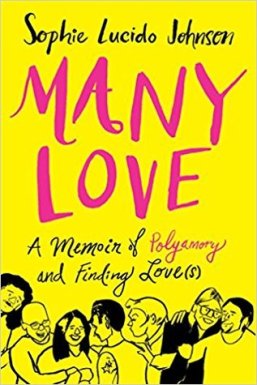 Gender Outlaw – On Men, Women, and the Rest of Us
Gender Outlaw – On Men, Women, and the Rest of Us
by Kate Bornstein
Memoir / Nonfiction / Gender Theory
299 pages
Published 2016 (1st edition pub. 1994)
This book has one of the best forewords I’ve ever seen. Bornstein explains that since 1994, when the book was first published, language has changed a lot, and terms that were used regularly then, like transsexual, are highly offensive now. So she has heavily rewritten the book to change the language, but she goes on to say that language is an always-changing thing, and in five or six years this edition, too, might be offensive in the language used. Then she apologizes for that. My favorite lines are one of the last paragraphs of the foreword:
Now, if anything you read in this book makes you feel bad or wrong or small and weak, then please know that I said something wrong. This book was written many years ago, and the culture I wrote it in is not the culture in which you’re reading it. So, if you find anything to be personally insulting, please accept my apology and keep reading with the knowledge that your identity and how you express your gender are correct only when you feel they are correct.
It was a wonderful note to start the book on. I just loved “if you are offended, if this invalidates your identity, then I AM WRONG.” Bornstein transitioned in the 80s, and has been an outspoken advocate of queer and trans people most of her life. She is definitely a figure in queer history that more people should read about.
The rest of the book is every bit as good as the foreword. Bornstein absolutely destroys the concept of gender in this book, dissecting it and looking at all the parts and pieces to attempt to figure out why society is so set on the binary system. She more than makes her case that gender is a spectrum, not an either/or. And not just a spectrum between “more male” and “more female” but a colorful kaleidoscope of gender expression and identity. She does not shy away from sensitive topics like surgeries and anatomy. She talks to the reader like she’s your favorite outrageous aunt, sitting in the family room gossiping over heavily-spiked tea.
The formatting was occasionally confusing; she has the usual justified text, but then she has left-aligned passages (usually quotes from other people) and right-aligned passages (side-bar like content; I’m unclear if these are notes she made on the original text or what, but it generally clarifies or alters what the main text is talking about.)
I would HIGHLY recommend this book for anyone who wants to learn more about gender issues. Bornstein has an incredibly entertaining way of writing, and she loves to challenge what we think of as gender.
From the cover of Gender Outlaw – On Men, Women, and the Rest of Us:
“I know I’m not a man . . . and I’ve come to the conclusion that I’m probably not a woman, either . . . . The trouble is, we’re living in a world that insists we be one or the other.” With these words, Kate Bornstein ushers readers on a funny, fearless, and wonderfully scenic journey across the terrains of gender and identity. On one level, Gender Outlaw details Bornstein’s transformation from heterosexual male to lesbian woman, from a one-time IBM salesperson to a playwright and performance artist. But this particular coming-of-age story is also a provocative investigation into our notions of male and female, from a self-described nonbinary transfeminine diesel femme dyke who never stops questioning our cultural assumptions.
Gender Outlaw was decades ahead of its time when it was first published in 1994. Now, some twenty-odd years later, this book stands as both a classic and a still-revolutionary work – one that continues to push us gently but profoundly to the furthest borders of the gender frontier.




